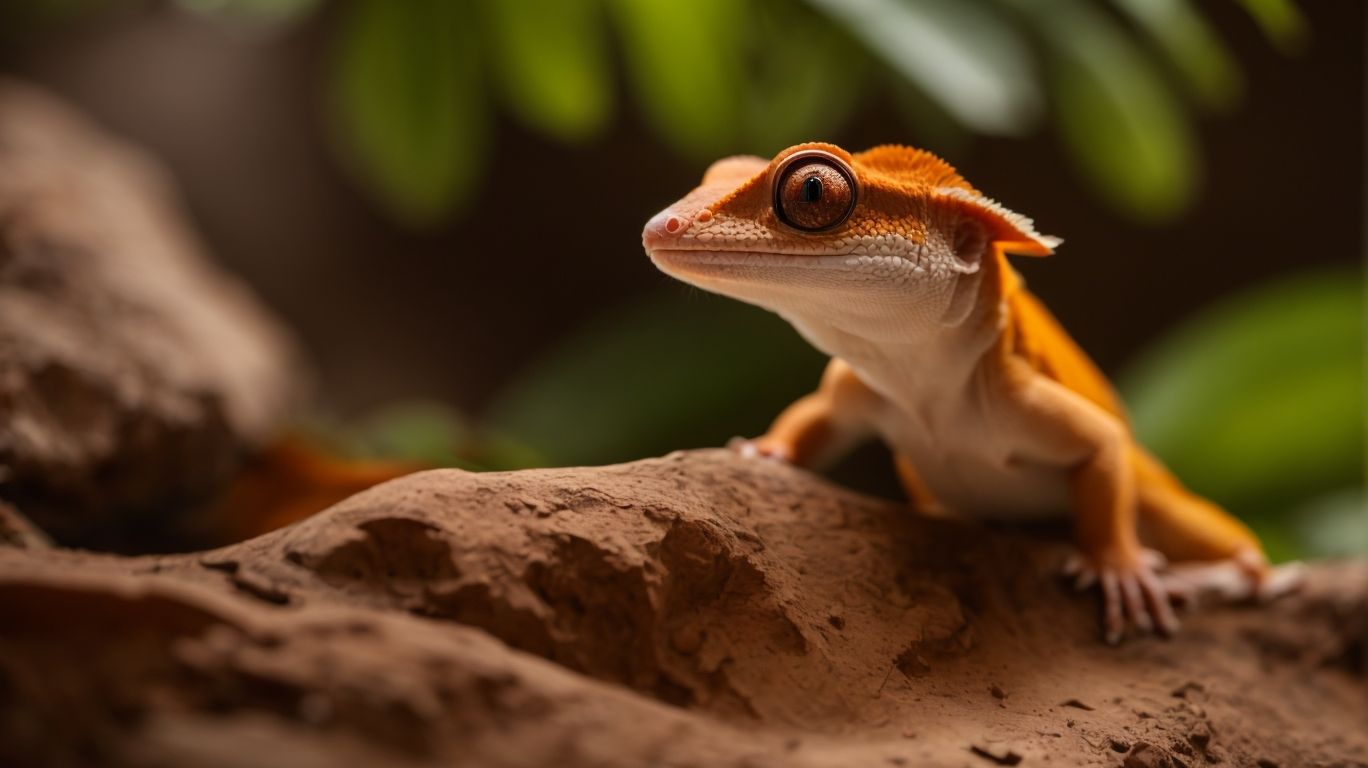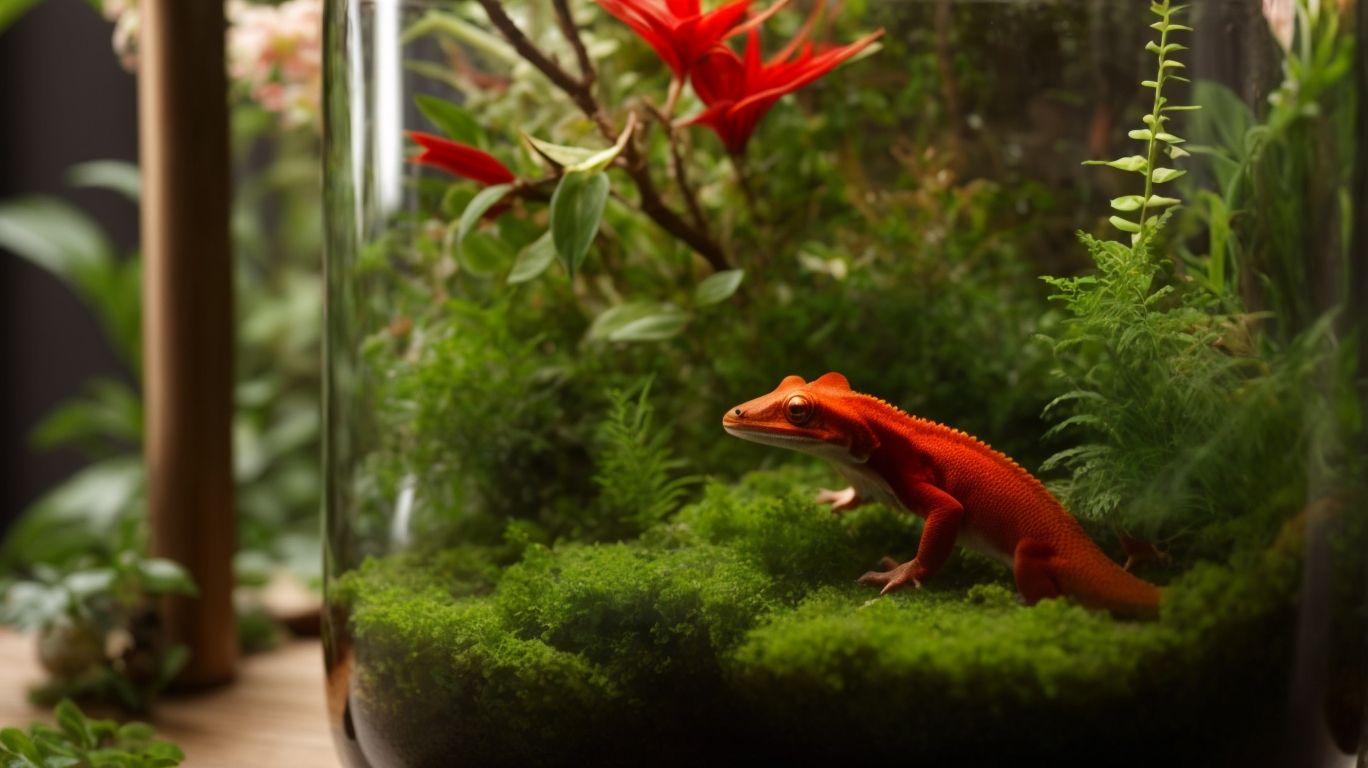
Creating the Perfect Habitat: Substrate Options for Crested Gecko Tanks
Are you thinking about adding a crested gecko to your family? If so, it’s important to create the perfect habitat for your new pet.
One key element of a crested gecko’s habitat is the substrate, or the material that lines the bottom of their tank. In this article, we will explore the different types of substrate options available for crested gecko tanks, including their pros and cons, how to choose the right one, and how to prepare and maintain it.
Whether you’re a new crested gecko owner or looking to upgrade your gecko’s habitat, this guide will help you make the best substrate choice for your pet.
What Is a Crested Gecko?
The Crested Gecko, scientifically known as Correlophus ciliatus, is a popular reptile species that has gained widespread popularity as an exotic pet due to its fascinating behavior and activities.
Crested Geckos are known for their distinctive crests running from their eyes to the base of their tail, giving them a unique appearance. They are primarily nocturnal creatures, displaying active behavior at night and resting during the day.
These arboreal geckos are skilled climbers, often seen clinging to vertical surfaces or perching on branches. Their ability to change color, known as ‘firing up’ or ‘firing down,’ fascinates reptile enthusiasts. With low-maintenance care requirements and a gentle demeanor, Crested Geckos make fantastic pets for both beginners and experienced reptile keepers.
What Are the Basic Requirements for a Crested Gecko Habitat?
Creating the perfect habitat for a Crested Gecko involves meeting essential requirements such as providing an ideal tank environment with the right temperature and humidity levels.
What Size Tank Is Suitable for a Crested Gecko?
Selecting the ideal tank size for a Crested Gecko is crucial to ensure its comfort and well-being, with a terrarium that provides ample space for movement and activities.
As arboreal creatures, Crested Geckos are naturally inclined to climb and explore, necessitating a vertically oriented terrarium with adequate height.
The tank dimensions should ideally be a minimum of 18x18x24 inches, allowing the gecko to exhibit its natural behaviors. An appropriately sized tank not only accommodates the gecko’s spatial requirements but also promotes physical and psychological well-being, reducing stress and enhancing its overall quality of life.
What Temperature and Humidity Levels Do Crested Geckos Need?
Maintaining the ideal temperature and humidity levels within the Crested Gecko’s habitat is essential for creating a comfortable and nurturing environment that supports its well-being and natural behaviors.
Crested Geckos thrive in temperatures ranging from 72-80°F during the day, dropping to 65-75°F at night. Humidity levels should be maintained at 60-80%.
These conditions mimic their native tropical habitat, enabling them to exhibit natural behaviors such as hunting, foraging, and breeding. Inadequate temperature and humidity can lead to health issues like dehydration and respiratory problems.
Providing the optimal environment with appropriate temperature and humidity levels plays a crucial role in promoting the overall health and happiness of Crested Geckos.
Why Is Substrate Important for Crested Gecko Tanks?
The selection of suitable substrate for Crested Gecko tanks is crucial as it serves various important functions, including providing a natural bedding that supports their well-being and natural behaviors.
When it comes to choosing a substrate for Crested Geckos, it’s important to consider its ability to mimic their natural environment. Not only does this help regulate humidity levels, but it also encourages natural behaviors like digging and foraging. Additionally, a suitable substrate can enhance the overall aesthetics of the tank, creating a visually appealing and enriching habitat for the geckos.
Some suitable substrate options to consider include coconut fiber, moss, or a mixture of both. These materials can provide a comfortable and stimulating environment for Crested Geckos, promoting their physical and mental well-being.
What Are the Different Types of Substrate for Crested Gecko Tanks?
When it comes to substrate options for Crested Gecko tanks, reptile owners have a variety of choices such as reptile carpet and sphagnum moss, each offering unique benefits and considerations for the gecko’s environment.
Coconut Fiber
Coconut fiber is a popular substrate choice for Crested Gecko tanks, known for its bioactive qualities and organic nature that supports a sustainable and natural gecko habitat.
It creates a naturalistic environment that mimics their natural habitat, retaining moisture and maintaining optimal humidity levels in the tank for optimal health. The fibrous structure of coconut fiber also encourages burrowing and nesting behaviors, allowing geckos to exhibit their natural instincts.
Moreover, it is a sustainable and environmentally friendly option for reptile owners conscious of their ecological impact. The ability of coconut fiber to decompose naturally also supports the creation of a self-maintaining, bioactive habitat for Crested Geckos.
Reptile Carpet
Reptile carpet offers a clean and safe substrate option for Crested Gecko tanks, providing an artificial yet hygienic bedding solution that is easy to maintain and safe for gecko health.
Reptile carpet is a popular choice for gecko bedding as it mimics the forest floor, creating a natural aesthetic and is easy to clean and maintain.
Its non-abrasive texture is gentle on gecko’s skin and prevents potential injuries. Additionally, reptile carpet reduces the risk of impaction, a common concern with loose substrates.
Not only is it cost-effective in the long run due to its reusability, but it also helps reduce waste and environmental impact by not requiring frequent replacement.
Paper Towels
Paper towels serve as a clean and sustainable substrate option for Crested Gecko tanks, offering a practical and easy-to-maintain bedding solution that supports a clean and hygienic gecko habitat.
The use of paper towels as a substrate for Crested Gecko tanks has several advantages. They are incredibly easy to clean and replace, making habitat maintenance a breeze. Paper towels are cost-effective, readily available, and can be recycled, aligning with sustainable substrate options.
Their versatility allows for easy customization of the tank layout, and their absorbent nature helps maintain optimal humidity levels. Paper towels present a convenient and eco-friendly choice for maintaining a healthy and clean Crested Gecko habitat.
Sphagnum Moss
Sphagnum moss provides a natural and moisture-retaining substrate option for Crested Gecko tanks, creating a bedding environment that aligns with their natural habitat and moisture requirements.
This unique moss not only helps maintain suitable humidity levels within the enclosure but also promotes the growth of beneficial microorganisms that aid in maintaining a clean and healthy environment for the geckos.
Due to its natural properties, sphagnum moss is gentle on the gecko’s skin, reducing the risk of irritation or injury. Its ability to regulate moisture levels effectively makes it an ideal choice for creating a comfortable and authentic habitat conducive to the well-being of Crested Geckos.
Orchid Bark
Orchid bark offers a versatile substrate option for Crested Gecko tanks, providing a textured surface that supports climbing branches and serves as an attractive decoration within the gecko habitat.
The rough texture of orchid bark not only mimics the natural environment of the gecko but also aids in maintaining optimal humidity levels. Its ability to hold moisture can create a more humidity-friendly environment.
The bark’s natural look adds an aesthetic appeal to the tank, creating a visually appealing and naturalistic habitat for the Crested Gecko. Its durable nature ensures that it can withstand the gecko’s movements, providing a secure climbing surface for them to explore and exercise.
Clay Substrate
Clay substrate presents a mineral-rich option for Crested Gecko tanks, offering essential minerals and contributing to the maintenance of a healthy and balanced gecko habitat.
This type of substrate is particularly beneficial for Crested Geckos due to its high mineral content, which supports their overall health and well-being.
Clay substrate helps to regulate humidity levels within the tank, creating a comfortable environment for the geckos. Its natural composition also encourages the growth of beneficial microorganisms, which aids in waste decomposition and contributes to the overall cleanliness of the habitat.
While using clay substrate, it’s important to monitor humidity levels and ensure proper ventilation to maintain optimal conditions for the geckos.
Sand
Sand serves as a natural substrate option for Crested Gecko tanks, providing a calcium-rich environment that aligns with their natural habitat and contributes to their well-being.
This natural bedding option offers a textured surface that mimics the gecko’s natural environment, allowing for natural digging behaviors and creating a more enriched captive habitat.
In addition, sand substrates assist in maintaining proper humidity levels within the tank, promoting healthier shedding and overall skin condition for the geckos. The calcium-rich nature of sand also contributes to promoting strong bones and a healthy metabolism, essential for the well-being and long-term health of these reptiles.
Soil Mixtures
Soil mixtures offer a bioactive substrate option for Crested Gecko tanks, creating an environment that supports the presence of beneficial insects and contributes to the gecko’s natural behaviors.
This naturalistic substrate closely mimics the Crested Gecko’s native habitat, promoting a healthy and stimulating environment for the reptile. It also facilitates the growth of microorganisms, which aids in the breakdown of waste and contributes to overall bioactivity.
The soil mixture provides a suitable medium for the establishment of live plants, further enhancing the tank’s aesthetics and providing hiding spots for the gecko. The use of soil mixtures as a bioactive substrate aligns with the gecko’s natural instincts and supports a thriving, interactive ecosystem within the tank.
How Do You Choose the Right Substrate for Your Crested Gecko?
Choosing the right substrate for your Crested Gecko involves considering various factors such as its natural habitat, behavioral tendencies, and the substrate’s suitability for supporting the gecko’s well-being.
When selecting a substrate for your Crested Gecko, it’s important to choose one that mimics their natural environment. These geckos originate from forested areas with a humid climate, so substrates like coconut husk or moss are ideal for maintaining proper humidity levels.
Additionally, Crested Geckos are known for their climbing tendencies, so providing a substrate that allows for burrowing and hiding spots can help support their natural behaviors. However, it’s important to be cautious of substrates that may pose ingestion risks or cause skin irritation, as these can negatively impact your gecko’s well-being.
What Are the Pros and Cons of Each Substrate Type?
Evaluating the pros and cons of each substrate type enables reptile owners to make informed decisions regarding the most suitable bedding option for their Crested Geckos, considering factors such as maintenance, natural appeal, and impact on gecko health.
Which Substrate Is Best for Maintaining Humidity Levels?
Identifying the best substrate for maintaining humidity levels in Crested Gecko tanks is essential to create a suitable environment that supports the gecko’s ideal moisture requirements and overall well-being.
This plays a crucial role in keeping the gecko’s skin healthy, aiding in shedding, and preventing dehydration. Some effective substrate options for maintaining ideal humidity levels include coconut husk, sphagnum moss, and a mix of topsoil and peat moss. These substrates help retain moisture, creating a humid microclimate within the tank.
Live plants such as pothos and ferns not only contribute to humidity regulation but also enhance the aesthetic appeal of the habitat. Maintaining the right humidity levels can significantly impact the gecko’s health, activity levels, and overall comfort within its enclosure.
Which Substrate Is Easiest to Clean?
Identifying the easiest substrate to clean for Crested Gecko tanks is crucial for maintaining a hygienic and well-maintained habitat that promotes the gecko’s health and comfort.
Options such as paper towels and reptile carpet are popular choices due to their ease of cleaning, as they can simply be replaced when soiled.
These substrates not only simplify maintenance but also contribute to a cleaner habitat, reducing the risk of bacterial growth and odors. They provide a comfortable and secure surface for the gecko, supporting their natural behaviors and reducing stress.
By prioritizing substrate cleanliness, Crested Gecko owners can ensure a healthier and more enjoyable environment for their pets.
Which Substrate Is Most Natural for Crested Geckos?
Determining the most natural substrate for Crested Geckos involves identifying options that closely resemble their native habitats. This means offering organic and environmentally-aligned bedding solutions that support their natural behaviors.
When it comes to organic bedding for geckos, it’s important to mimic the forest floor environment. This can be achieved by using materials like coconut husk, peat moss, or organic soil, which provide a soft and moisture-absorbing surface for geckos to explore and burrow.
In addition, incorporating natural elements such as leaf litter and bark can enhance enrichment and stimulation for geckos. These elements encourage their instinctual foraging and hiding behaviors, creating a more natural and enriching habitat for these beloved reptiles.
By prioritizing natural substrates that closely mirror their natural environment, gecko owners can ensure the well-being and happiness of their companions.
Which Substrate Is Most Cost-Effective?
When considering the most cost-effective substrate for Crested Geckos, it’s important to prioritize budget-friendly options that also promote the gecko’s well-being and habitat quality. This can be achieved by choosing economical bedding solutions that are both affordable and require minimal maintenance.
Some popular substrate options for Crested Geckos include paper towels, newspaper, and coconut fiber. These options not only fit within a budget but also offer convenience and practicality. For instance, paper towels are easy to clean up, making them a great choice for busy pet owners. Similarly, newspaper provides a comfortable surface for geckos to explore at a low cost.
Another option to consider is coconut fiber, which may be slightly more expensive but offers excellent moisture retention and odor control. This creates a healthier habitat for Crested Geckos and can ultimately save money on potential health issues in the long run.
How Do You Prepare and Maintain Substrate for a Crested Gecko Tank?
The process of preparing and maintaining substrate for a Crested Gecko tank involves essential steps such as cleaning, monitoring hygiene, and ensuring the substrate remains conducive to the gecko’s well-being and habitat cleanliness.
Regular maintenance of the substrate is crucial to uphold a healthy environment for the gecko. This includes daily spot cleaning to remove waste and uneaten food, as well as regular deep cleaning of the entire tank to prevent bacteria and mold buildup.
Monitoring the humidity level and substrate moisture is vital to prevent respiratory issues and skin problems in the gecko. The type of substrate chosen also plays a significant role in the gecko’s well-being, with options such as coconut fiber, moss, or paper towel bedding offering different levels of moisture retention and texture for the gecko’s comfort and health.




No Comments